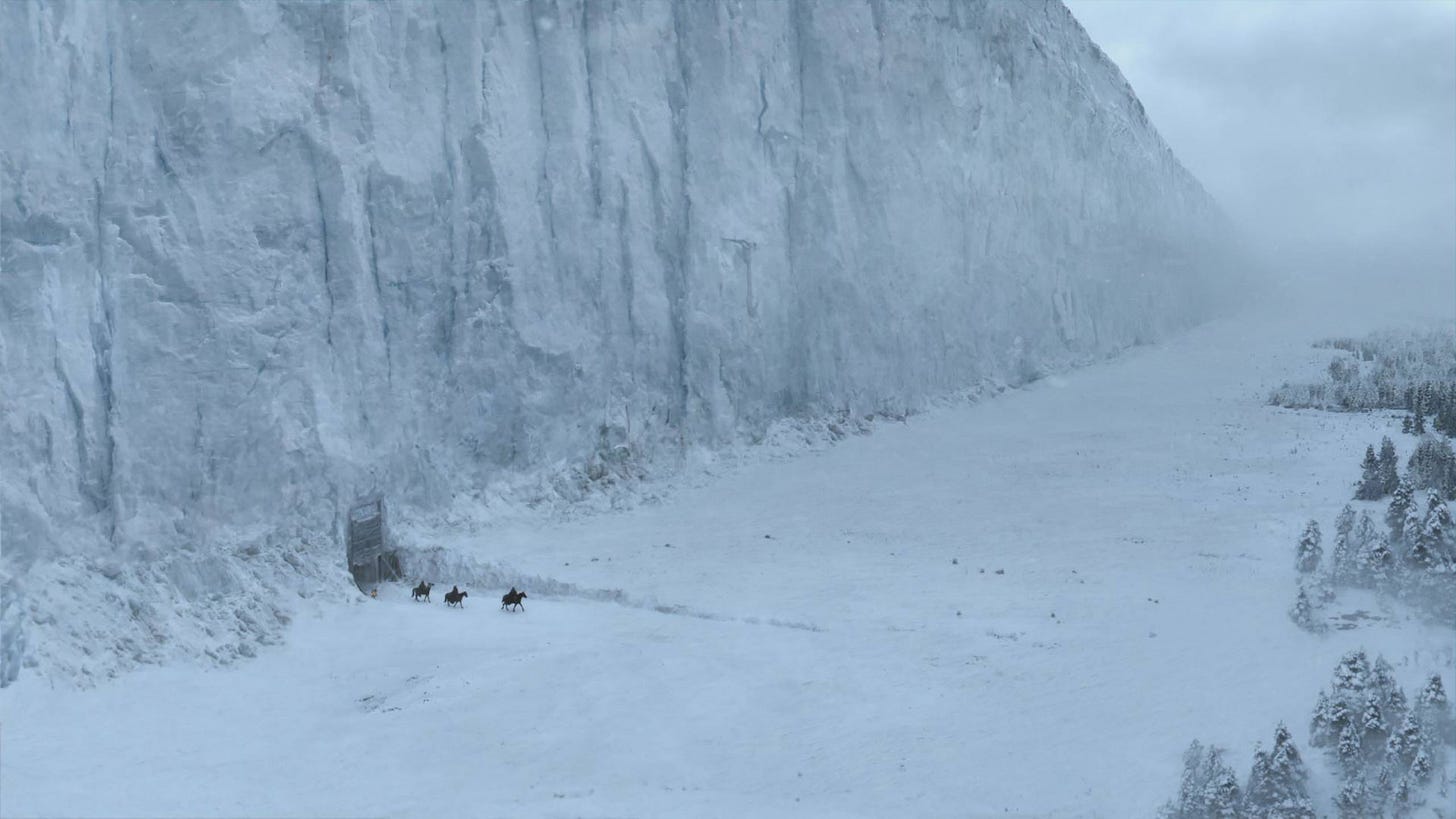Stuck on Stuckness
The difference between being stuck on a problem and stuck in stuckness. The creative power behind "What if" questions. Creating playful possibility amidst seriousness.
I often find that when people are stuck on a challenging problem, they’re not actually stuck on the problem. Instead, they’re stuck on their stuckness.
Being stuck on a problem means that you have no clue how to move forward. You see no options, no way to keep going (hint: this almost never happens). It is akin to coming upon the wall from Game of Thrones, stretching out to infinity with no gates, elevators, or climbing gear (spoiler alert: even then they found a way).
Getting stuck on your stuckness is something else entirely. When you’re stuck on your stuckness, you see one or more paths forward, but are getting wrapped up in the uncertainty or tradeoffs between these paths. Instead of getting into action around how to figure out the best path, you get caught up in your stories about the paths. These stories are often about how no matter what there are downsides, about how this is hard, about the emotions you’re experiencing about the paths and the uncertainty around them.
When you’re stuck on stuckness, your energy and focus are pulled to your lack of knowing, your inability to solve the problem, and your discomfort instead. They are notably not oriented on how to move forward.
In these moments, what you need most is to let go and step out of your stuckness and into creative possibility and action. You need to abandon the need to find the “right” solution and get into a creative learning process. A great way to facilitate this shift is to ask yourself “What if?” or “I wonder” questions.
What if this were easy?
What if it didn’t have to be perfect?
What if I were to stop trying to figure it out and jump into the first action that can move it forward? (I wonder what one small action is that I could take to move this forward?)
I wonder if anyone in my network could help me solve this problem?
I wonder if this would better be solved alone or by working with my team?
The beauty of “what if” or “I wonder” questions are that their framing forces you out of brooding on the insurmountability of a challenge and instead focuses you on identifying new possibilities. It is designed to pull you into your creativity.
One difficulty that ambitious types can encounter while trying to shift in this way is that they get stuck in their beliefs about the seriousness of the problem. Jumping from anxious rumination to playful questioning is something that you don’t sense that you have access to. “This is serious,” you’ll say. “I don’t have time to play games.”
There’s a lot to unpack in the story that things must be serious. That’s for another day. Recently, I’ve been using a new question to move ambitious types into the space of creative possibility while also allowing for the “seriousness” of the issue: What would you do if you were world class at this?
The magic in the question is that it embodies both challenge and play. Ambitious types are galvanized by challenging calls to action. Being asked to consider what world class looks like pulls us up to that bar—and it’s an exciting bar to consider.
I also love this question because embedded in it is a belief, validated by experience, that being world class is less about what you know or don’t know, less about what you can or can’t do now, and instead about being committed to the process of excellence. Namely that world class is, at heart, a way of being.




